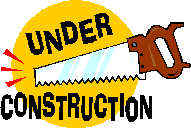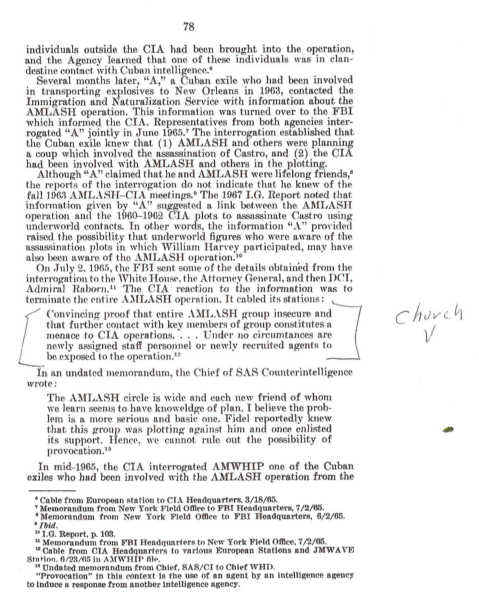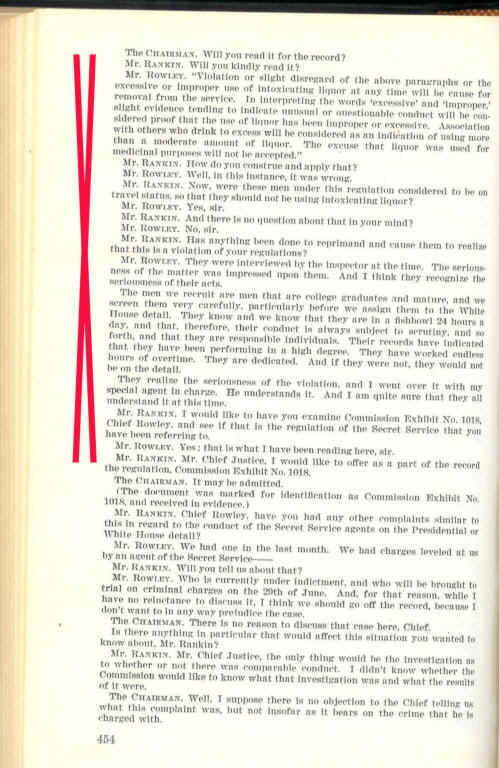
Here are some interesting pages from the Church Committee Report.
At the bottom see several of the volumes from the Church Committee.
In 1979 the Church Committee released it's SCATHING 14 volume report on their investigation of the abuses of the U S Intelligence Agencies
Volume I contains testimony from former CIA Director William Colby including the Umbrella weapon.
Volume ll is about the CIA Spying on American people.
Volum III is all about the CIA's illegal activities aginst Dr. Martin Luther King.
Volume IV is about the JFK ssassination.
Volume is the Shweiker Report on the JFK Assassination.
Volume IV gave many details of how the FBI broke the Law in they're relentless pursuit of Dr. Martin Luther King Jr.
Volume V delved into the performance of the Intelligence Agencies in the investigation of the assassination of John F Kennedy.
The Report below states that it was NOT Oswald in Mexico city but, an IMPOSTER which didn't seem to bother the Warren Commission.

This CIA Report from the Church Committee indicates that the CIA didn't even Trust each other.

MORE Church Committee


SEE>>> http://www.youtube.com/watch?v=4jsB_kpoYdo
Testimony from the Church Committee Volumes.
Re: Umbrella as a Weapon- 2 CIA Directors & Developer
Confirm Existence
Re: Re: The entrance wound to the President's throat -- Christopher Zimmerman
Post Posted by: Don Roberdeau ¨
05/18/2002, 23:05:24
------------------------------------------------------------------------------
--
In light of the following testimony by 2 ex-CIA
Directors, WILLIAM COLBY and RICHARD HELMS, and the admitted developer of an
umbrella weapon, himself, CHARLES SENSENEY, who actually testified he
designed just such an umbrella weapon, I have never, completely, discounted a
very small, nearly silently fired, paralyzing, disolving, dart fired by
"the
umbrella man" (TUM).
Just such a clandestine dart could explain two very important attack
considerations:
1. The President, a combat-experienced military veteran, was prevented from
being able to instinctively/voluntarily, dive/roll lower for protective
limousine cover. The President's only 8" tall back supporting corset (FBI
exhibit C35, worn low on his upper-hips-into-lower-back) did NOT prevent him
from performing such a dive. Ensuring success, and planning every single
contingency-- including the coningency for the first rifle shot not being
fatal-- was an absolute conspiratorial necessessity. The hierarchal
possibility of first physically imobilizing the President, would, assuredly,
be of prime importance, if it could be accomplished. It could. As you'll read
below, the CIA had already developed, and refined, just such
incapaciating/killing systems since the 1950's.
2. PERRY told HUMES, after the Bethesda autopsy, that the wound through which
he scalpled for the Parkland tracheotomy was, only, "3 to 5
millimeters" in
diameter.
Here is the testimony of COLBY, HELMS, and SENSENEY before the Church
Committee on September 16 to 18, 1975, as published in Volume One (1976) of
that Committee's final report, under the title, "Unauthorized Storage of
Toxic Agents."
Note the range of this dart delivery system.
SEE>>> http://www.youtube.com/watch?v=4jsB_kpoYdo
************************************
Start Testimony excerpts from Volume I
TUESDAY, SEPTEMBER 16, 1975.
"Testimony of William E. Colby, director of the Central Intelligence
Agency.
The Committee met at 10 A.M. in the Russell Building. Present: Senators
Church, Tower, Mondale, Huddleston, Morgan, Hart of Colorado Baker,
Goldwater, Mathias, and Schweiker. Also present: William G. Miller, staff
director, Frederick A. 0. Schwarz, chief counsel, Curtis Smothers and Paul
Michel, Committee staff members.
Chairman Church: The particular case under examination today involves the
illegal possession of deadly biological poisons which were retained within
the CIA for five years after their destruction was ordered by the President.
. . . The main questions before the Committee are why
the poisons were
developed in such quantities in the first place: why the Presidential order was
disobeyed; and why such a serious act of insubordination could remain
undetected for so many years.
William Colby: The specific subject today concerns the CIA's involvement in
the development of bacteriological warfare materials with the Army's
Biological Laboratory at Fort Detrick, CIA's retention of an amount of
shellfish toxin, and CIA's use and investigation of various chemicals and
drugs. . . . Information provided by him [from a CIA officer not directly
associated with the project] and by two other officers aware of the project
indicated that the project at Fort Detrick involved the development of
bacteriological warfare agents--some lethal--and *associated delivery systems
stable for clandestine use* [emphasis added]. The CIA relationship with the
Special Operations Division at Fort Detrick was formally established in May
1952. The need for such capabilities was tied to earlier Office of Strategic
Services World War II experience, which included the development of two
different types of agent suicide pills to be used in the event of capture and
a successful operation using biological warfare materials to incapacitate a
Nazi leader temporarily. The primary Agency interest was in the development
of dissemination devices to be used with standard chemicals off the shelf.
Various dissemination devices such as a fountain pen dart launcher appeared
to be peculiarly suited for clandestine use. . . . A large amount of Agency
attention was given to the problem of incapacitating guard dogs. Though most
of the dart launchers were developed for the Army, the Agency did request the
development of a small, hand-held dart launcher for its peculiar needs for
this purpose. Work was also done on temporary human incapacitation
techniques. These related to a desire to incapacitate captives before they
could render themselves incapable of talking, or terrorists before they could
take retaliatory action. [Or to prevent guard dogs from barking.] ....such
operation involved the penetration of a facility abroad for intelligence
collection. The compound was guarded by watchdogs which made entry difficult
even when it was empty. Darts were delivered for the operation, but were not
used.
Church: Have you brought with you some of those devices which would have
enabled the CIA to use this poison for killing people?
Colby: We have indeed.
Church: Does this pistol fire the dart?
Colby: Yes it does, Mr. Chairman. The round thing at the top is obviously the
sight; the rest of it is what is practically a normal .45, although it is a
special. However, it works by electricity. There is a battery in the handle,
and it fires a small dart. [Self-propelled, like a rocket.]
Church: So that when it fires, it fires silently?
Colby: Almost silently; yes.
Church: What range does it have?
Colby: One hundred meters, I believe; about 100 yards, 100
meters.
Church: About 100 meters range?
Colby: Yes.
Church: And the dart itself, when it strikes the target, does the target know
that he has been hit and [is] about to die?
Colby: That depends, Mr. Chairman, on the particular dart
used. There are
different kinds of these flechettes that were used in various weapons
systems, and a special one was developed which potentially would be able to
enter the target without perception.
Church: Is it not true, too, that the effort not only involved designing a
gun that could strike at a human target without knowledge of the person who
had been struck, but also the toxin itself would not appear in the autopsy?
Colby: Well there was an attempt ....
Church: Or the dart?
Colby: Yes; so there was no way of perceiving that the target was hit.
WEDNESDAY, DECEMBER 17, 1975. (RICHARD HELMS' testimony):
Huddleston: Mr. Helms, you said you were surprise
or that you had never seen the dart gun that was displayed here yesterday.
Would you be surprised or shocked to learn that that gun, or one like it, had
been used by agents against either watchdogs or human beings? Helms: I would
be surprised if it had been used against human beings, but I'm not surprised
it would have been used against watchdogs. I believe there were various
experiments conducted in an effort to find out how one could either
tranquilize or kill guard dogs in foreign countries. That does not surprise
me at all.
Huddleston: Do you know whether or not it was used, in fact, against
watchdogs?
Helms: I believe there were experiments conducted against dogs. Whether it
was ever used in a live operational situation against dogs, I do not recall.
THURSDAY, SEPTEMBER 18, 1975. (Testimony of CHARLES A. SENSENEY):
Senseney: I worked in the Biological Warfare Section of Fort Detrick from
1953. . . . I was the project engineer of the M-1 dart launcher and following
on microorganism projectiles and so
orth. Smothers: Is this a device that looks roughly like a .45
caliber pistol
with a sight mount at the top? Senseney: This was a follow-on. It was to
replace the M-1 projectile to go into the Army stockpile. It did look like a
.45.
Smothers: Did the CIA have, Mr. Senseney, the wherewithal to utilize this
dart launcher against humans?
Senseney: No, they asked for a modification to use against a dog. Now, these
were actually given to them, and they were actually expended, because we got
all of the hardware back. For a dog, the projectile had to be made many times
bigger. It was almost the size of a .22 cartridge, but it carried a chemical
compound known as 46-40.
Smothers: And their interest was in dog incapacitation?
Senseney: Right Baker: Your principle job with the DOD, I take it, was to
develop new or exotic devices and weapons: is that correct?
Senseney: I was a project engineer for the E-1, which was type classified and
became the M-1. They were done for the Army.
Baker: Did you have any other customers?
Senseney: To my knowledge, our only customer was
Special Forces and the CIA,
I guess.
Baker: Special Forces meaning Special Forces of the Army?
Senseney: That is correct.
Baker: And the FBI?
Senseney: The FBI never used anything.
Baker: Looking at our previous executive session testimony, apparently you
developed for them a fountain pen. What did the fountain pen do?
Senseney: The fountain pen was a variation of an M-1. An M-1 in itself was a
system, and it could be fired *from anything* [emphasis added]. It could be
put into....
Baker: Could it fire a dart or an aerosol or what?
Senseney: It was a dart.
Baker: It fired a dart . . . a starter, were you talking about a fluorescent
light starter?
Senseney: That is correct.
Baker: What did it do?
Senseney: It put out an aerosol in the room when you put the switch on.
Baker: What about a cane, a walking cane?
Senseney: Yes, an M-1 projectile could be fired from a
cane; also an
umbrella.
Baker: Also an umbrella. (my insertion=light bulb illuminates over BAKER's
head!) What about a straight pin?
Senseney: Straight pin?
Baker: Yes, sir.
Senseney: We made a straight pin, out at the Branch. I
did not make it, but I
know it was made, and it was used by one Mr. Powers on his U-2 mission.
Huddleston: Were there frequent transfers of material between Dr. Gordon's [a
researcher at Fort Detrick] office and your office, either the hardware or
the toxin?
Senseney: The only frequent thing that changed hands was the dog projectile
and its loaders 46-40. This was done maybe five or six in one quantity. And
maybe six weeks to six months later, they would bring those back and ask for
five or six more. They would bring them back expended, that is, they bring
all of the hardware except the projectile, okay?
Huddleston: Indicating that they have been used?
Senseney: Correct.
Huddleston: But it could have been used on a human
being?
Senseney: There is no reason why it could not, I guess.
Schweiker: Mr. Senseney, I would like to read into the record [from a CIA
document] at this point a quote from paragraph nine [exhibit 6, document 67]:
"When funds permit, adaptation and testing will be conducted of a new,
highly
effective disseminating system which has been demonstrated to be capable of
introducing materials through light clothing, subcutaneously,
intramuscularly, and silently, without pain." Now, I just have a little
trouble, Mr. Senseney, reconciling your answers in conjunction with this
project, when the CIA document makes clear that one of the very specific
purposes of the funding and the operation was to find a weapon that c
ld penetrate light clothing subcutaneously, which obviously means through the
skin, and intramuscularly, which obviously means through the muscles of a
person. And are you saying that you have absolutely no recollection at all
that tests or programs were designed to use any of these devices to permeate
clothing on people and not dogs?
Senseney: We put them on mannequins.
Schweiker: What's that?
Senseney: We put clothing on mannequins to see whether we could penetrate it.
These were the requirements. You almost read the exact requirements that the
SDR quoted from the Special Forces there.
Schweiker: I would not expect you to test them on live human beings. I would
hope that you did use mannequins, Mr. Senseney. Wouldn't that be directed
toward people-usage, though? That is the point we're trying to establish.
Senseney: That is what the Special Forces direction was. You have to look at
it this way. The Army program wanted this device. That is the only thing that
was delivered to them. It was a spin-off, of course, from the M-1. The M- 1
was a lethal weapon, meant to kill a person, for the Army. It was to be used
in Vietnam. It never got there, because we were not fast enough getting it
into the logistics system.
Schweiker: What was the most-utilized device of the ones with which you
worked and supervised?
Senseney: The only thing I know that was really used
was the dog projectile. The other things were in the stockpiles. I don't
think anyone ever requested them.
Schweiker: How do you know for certain it was for dogs?
Senseney: Well that is what they asked us to test them against. They wanted
to see whether they could put a dog to sleep, and whether sometime later the
dog would come back and be on its own and look normal.
Schweiker: Of the devices that came through you, which of these were utilized
in any capacity other than for testing?
Senseney: That was the only one that I know of--the dog projectile. I call it
a dog projectile. We were developing it because the scenario read that they
wanted to be able
to make entrance into an area which was patrolled by dogs, leave, the dog come
back, and then no one would ever know they were in the area. So that was the
reason for the dog projectile.
Church: Thank you Senator Schweiker. I think it is
clear that the CIA was
interested in the development of a delivery system that could reach human
beings, since not many dogs wear clothing. And you would agree with that,
wouldn't you?
Senseney: Yes.
Church: Okay.
Schwarz: Along the same line, I assume you must agree
that
spending money in order to make darts of such a character that they cannot be
detected in an autopsy does not have much to do with dogs?
Senseney: No, that would not have anything to do with dogs."
It would seem to me that it would be a very, Very, VERY short list of persons
qualified in 1963 to use this 100 yard range, CIA/Special Forces, umbrella
weapon. If such as list could be discovered-documented, it might be an
extremely valuable avenue to explore and illuminate.
Somewhere online is a link to FLETCHER PROUTY stating he witnessed a
demonstration of just such a flechette dart weapon in his Pentagon office in
1960; in July, 1960, I believe.
Yes, that would be a *mighty* short persons qualified in 1963 list.
"There's other things involved that are detrimental to other things."
-CIA officer REGIS BLAHUT after he was fired in 1978 by the CIA after
examining and handling the autopsy photos of President KENNEDY kept in an
H.S.C.A. safe without permission, or anyone present.
BOOK I Book one tells us that the CIA perfected an Umbrella weapon that fired fleshetes (darts) It also tells of quite a few "Illegal actions" AGAINST AMERICAN CITIZENS.
BOOK II Book two tells of all about the Domestic Spying the Gov't subjected Innocent civilians too.
BOOK III Book II tells us that the CIA perfected an Umbrella weapon that fired fleshetes. It also tells how the CIA "Disobeyed Presidential Orders".
BOOK IV Book III tells of some of the Illegal projects against Dr. Martin Luther king.
BOOK V Book V is Senator Richard Schweiker's Sub-Committee.
Contact Information tomnln@cox.net
Page Visited
Times






